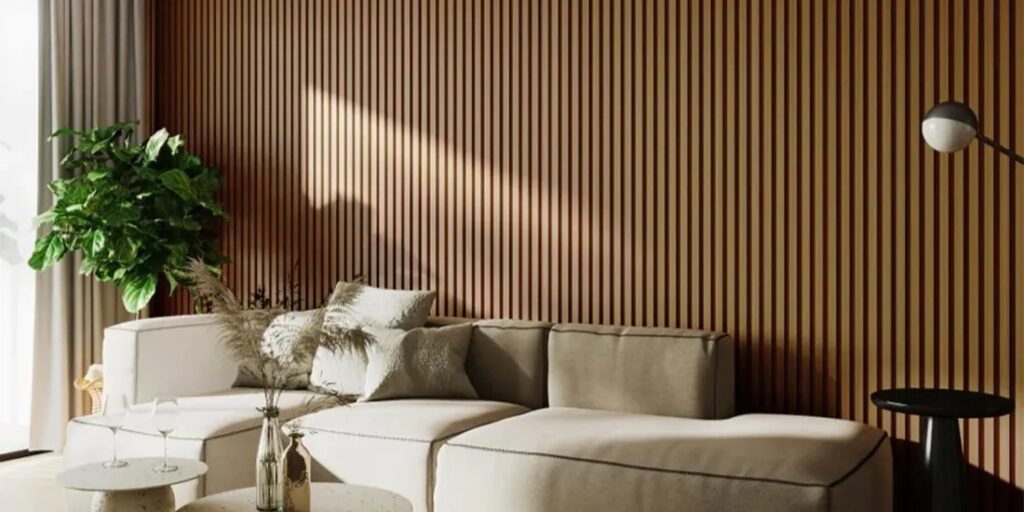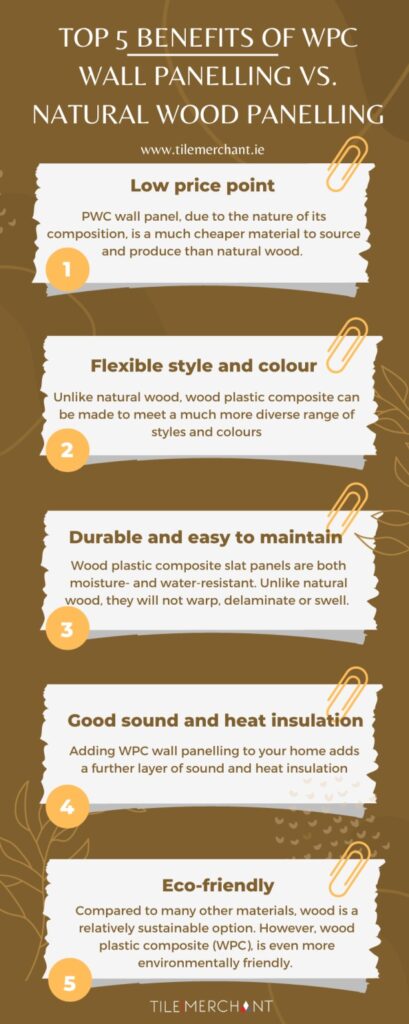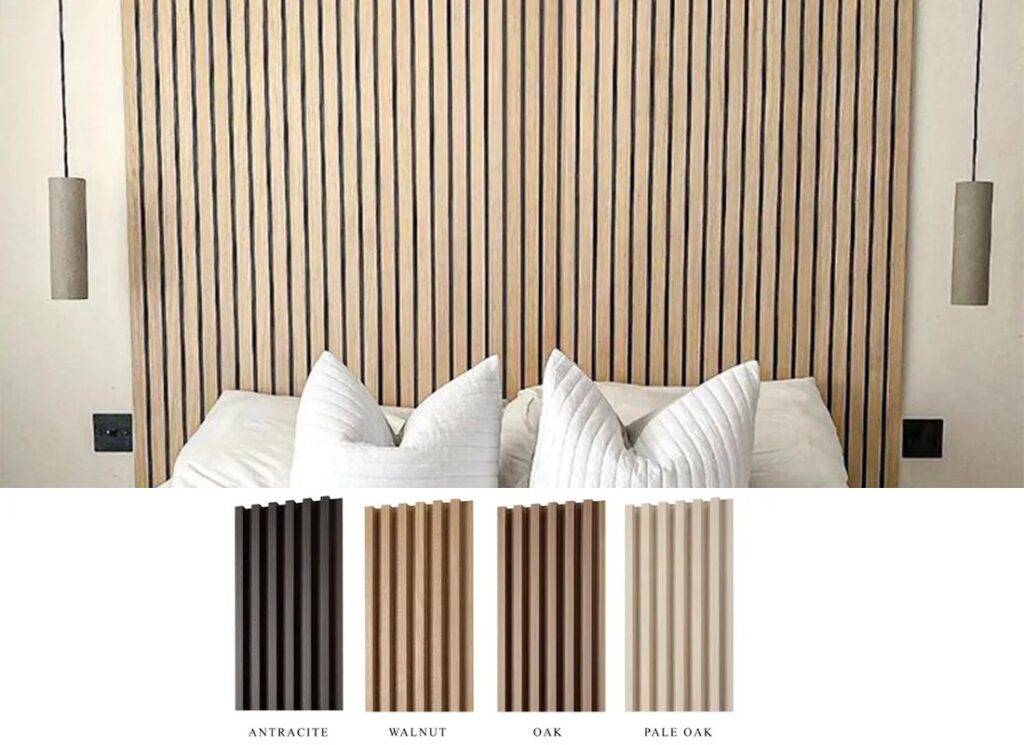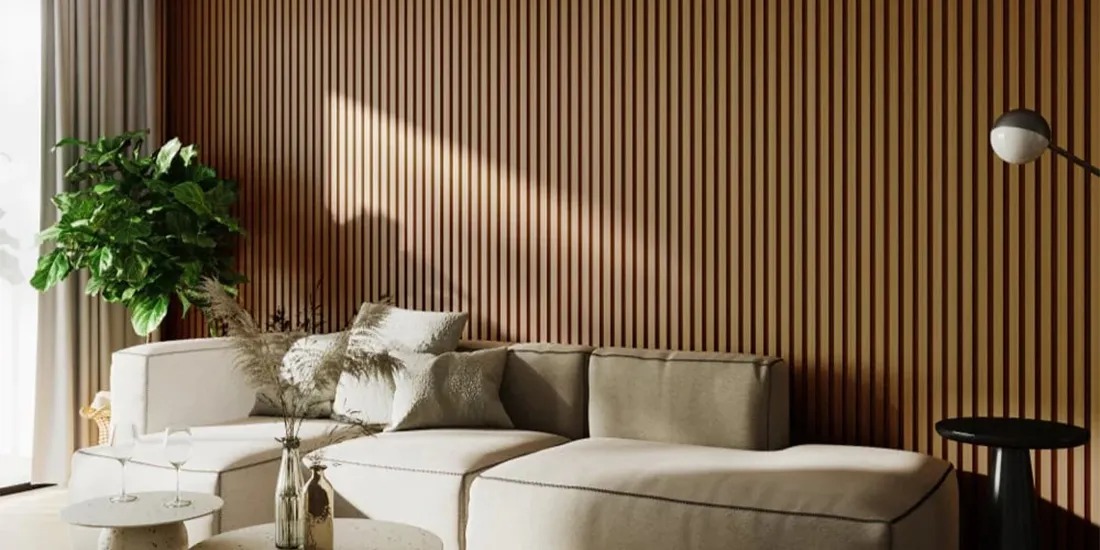Why Wall Panelling Is Ireland’s Hottest Home Interior Trend
Why Wall Panelling Is Ireland’s Hottest Home Interior Trend
What is wall panelling?
Wall panelling is set to become Ireland’s most popular home interior redecoration trend in 2024, and for good reason. But what exactly is wall panelling? Wall panelling – also known as wainscoting, wood panelling, wall cladding, tongue and groove panelling, or moulding – refers to a range of different materials, in a range of different styles, used to cover the interior walls of homes for the sake of improved aesthetics and insulation.
Homes have been decorated with panelling on walls since ancient times, when stone buildings might be lined with wood to give them a warmer feel and look. Today, the trend continues. More affordable and environmentally friendly than wood panelling, Tile Merchant’s WPC (wood plastic composite) panelling comes in a range of attractive slat wall designs, selected to offer Irish home-owners a high quality alternative to the cheap and flimsy cladding panels stocked by larger wholesalers.

What is WPC wall cladding?
WPC wall panelling in Ireland stands for "wood plastic composite", referring to a light, durable and eco-friendly material manufactured by combining small pieces of wood with resins under intense pressure and a high heat.
Traditionally, vertical cladding for your interior would be made from natural woods such as oak, chestnut and mahogany. However, real wood panelling has fallen out of favour due to its high cost on both the environment and your purse.
WPC cladding panels offer all of the same aesthetic and insulatory benefits of real wood panelling, without any of the drawbacks. WPC wall panelling is even preferable to wood panels across a range of categories!
Wall panels come in a variety of options, including Acoustic Panels and Wood Wall Panels.
Top 5 benefits of WPC wall panelling vs. natural wood panelling
Let’s take a quick look at the top 5 benefits of renovating your home interior with wall slats in Ireland today!
1. Low price point
WPC Wall panelling is cheaper than wood panels. Composite wood tongue and groove cladding, due to the nature of its composition, is a much cheaper material to source and produce than natural wood.
Per square metre, WPC is also often the cheaper option when compared to tiling. Furthermore, WPC slat wall panels are easy to install, meaning that you save costs on labour.
Whether you’re renovating your Irish home on a tight budget, or wish to save some pennies on wall aesthetic so that you can splash out on decor and fittings, DIY wall panelling offers a beautiful finish at a bargain price.

2. Flexible style and colour
WPC Wall panelling has a diverse range of colours. Unlike natural wood, wood plastic composite can be made to meet a much more diverse range of styles and colours. Though our WPC wall panelling is available in a variety of traditional wood finishes – including walnut, light and dark oak – it is also available in anthracite, for those with inclinations toward darker palettes, and for use in modern, minimalist Irish homes.
3. Durable and easy to maintain
WPC Wall panels are easier to maintain than wood panels. Using natural stone and wood in your home’s interior does, of course, look stunning, but it can be hard to maintain. In contrast, WPC Irish wall panelling is built to last, without the arduous upkeep regime which natural materials require. Wood plastic composite slat panels are both moisture- and water-resistant, meaning that no matter where in the home you install them, they will not warp, delaminate or swell.
Similarly, WPC wall panelling is easy to clean – making it the ideal installation material for naturally dirtier parts of the home, such as the kitchen and bathroom. WPC is designed to require minimal maintenance, whilst retaining that eye-catching showroom look for many, many years to come.
4. Good sound and heat insulation
As we said in the introduction, wood panelling has been in use for millennia as a means of protecting home interior walls, but also as a means of better insulating them. Adding WPC wall panelling to your home adds a further layer of sound and heat insulation, giving you more privacy (or shutting out the sound of noisy neighbours), and keeping you warmer – during a winter in which energy bills are higher than ever.
5. Eco-friendly
Compared to many other materials, wood is a relatively sustainable option. However, wood plastic composite (WPC) – the material we use to make our wall panelling – is even more environmentally friendly. The wood we use is reclaimed, whilst the plastics are 100% recyclable.
According to the European Plastics Converter (EUPC), the average lifespan of the plastics in WPC is 35 years, which also ensures that you’ll not need to replace your wood panelling for decades to come – reducing its carbon footprint even further, and helping to protect the planet from the disastrous effects of the ongoing climate crisis.

Where to install WPC panels in homes in Ireland
The beauty of the WPC slatted wall panels sold in Ireland is that they can be used anywhere around the house, bringing unique style and warmth to different rooms in different ways.
Kitchen Wall Panels
Because WPC wall panelling is waterproof and easy to clean, it makes for a trustworthy companion in the kitchen. If your kitchen sees little natural light, you might want to consider installing our grey kitchen wall panels to give your cooking space a brighter feel. Whereas, if you get plenty of sunlight streaming in through the kitchen windows, you can afford to lean toward a darker walnut cladding, and bring a slice of fireside scandi-chic to Ireland.
Bathroom Wall Panels
In a similar vein to panelling your kitchen walls, the humidity- and water-resistance of WPC ensure that it’s safe (and practical) to use in the bathroom or shower room, as well. There, you might choose to go for a darker look still: our Irish anthracite wall panels are slate-black and give toilets a clean, modern feel.
Living Room Wall Panels
I don’t know about you, but my dream home is all wood and wood effect (WPC), floor-to-ceiling, with a log burner in the corner on which I also cook, with windows misted up against the frost outside. Whether we share that dream or not, there’s no denying the positive effects the look, warmth, and feel of wood can have on our mental health. Choosing a natural oak WPC slat wall for your living room gives it the feel of a log cabin in the woods – calming, cosy, and comforting.
Hallway Wall Panels
Vertical lines can help to make spaces feel taller, whilst the slightness of the slats gives the impression that hundreds of them fit into a room you’d otherwise have thought much smaller. Together, the optical illusion effects which wood panelling, like our WPC panels, adds to a space makes it an ideal choice for a hallway decorating. Not only will it make you and your visitors feel as if you’re walking through a cosy Norwegian abode, it will make your entrance spaces feel more spacious.
How to install wall panelling for Irish home renovations
You don’t need to hire professional contractors to install WPC wall panelling in your Irish home. DIY wall panelling is super easy to do, thanks to the innovative tongue and groove build of each panel. In order to install wall panelling DIY, you’ll need the following:
- Screws, wall plugs, screwdriver
- Bostik MSP 109 Turbo Bond, glue gun
- Square
- Stainless steel wall panel clips
- Nails, hammer (or nail gun)
- WPC slat wall edging (matching the colour of your slat wall)
- Circular electric saw
- Enough WPC wall panelling to cover your chosen room/walls
To install wall panelling in your bathroom, kitchen, living or dining room, or hallway, just follow these simple instructions:
- Measure the height of your wall(s) and, using your circular saw, trim your wood panelling and edging to that height
- Fix the first WPC slat panel to the wall with the adhesive, applying the glue to the back of the board in a zigzag pattern for maximum coverage
- Affix 5 of the stainless steel wall panelling clips to this first panel at regular vertical intervals, securing them to the wall with screws
- Slide the next panel into place, fixing it to the first via the steel clips. (Note: There is no need to glue any of the panels between the first and last)
- Repeat steps 3 and 4 until you have covered the entire space bar one panel
- Fix the final composite wood panel to the wall with glue, and to the rest of the wall panelling via the clips on the penultimate panel.
- Finish the aesthetic of the wall panelling by applying trim to the top, bottom, and corners, using the adhesive glue

(FAQ) Wall Panelling: frequently asked questions
Is wall panelling a good idea?
Wall panelling offers a quick, affordable and easy-to-install facelift to any room in the home.
Is wall panelling easy to install?
Wall panelling is super easy to install, and cheap, too! To learn how to install your own DIY wall panelling, see our installation guide above.
What material is the best for panelling?
Wood is the traditional material used for wall panelling, but is more expensive than WPC slat pannels and not usually environmentally sound. WPC (wood plastic composite) is a much more affordable and eco-friendly alternative, and thus the best material for panelling. Acoustic wall panels are a great solution for those homeowners who want to achieve the elegance of the wood and want to absorb unwanted sounds. Acoustic wall panels eliminate excess noise in a room by reducing noise that can be created in a space.
Is wall panelling outdated?
Much to the contrary, wall panelling is more fashionable than ever. It has been in use for millennia as a cheap way to heat homes and make boring brick or cement walls look attractive. It’s not going to become outdated anytime soon.
What are the types of wall panelling?
There are lots of different types of wall panelling, in terms of both material and style. Here at Tile Merchant, we offer WPC vertical cladding for your interior walls in a range of natural wood and other colours. We also offer wood wall panels and acoustic wall panelling. The choice is yours.
How do I secure my tongue and groove panelling to the wall?
Secure your tongue and groove panelling to the wall with a combination of strong adhesive (like our Bostik MSP 109 Turbo Bond) and stainless steel wall panel clips. See our installation guide above for a full rundown of the DIY process.
Does wall panelling need to be glued?
Only the first and last panels of our WPC wall panelling need to be glued to the wall, all panels in between are fixed via the steel panel clips.
Conclusion
At Tile Merchant, we’re proud to offer our customers across Ireland – from Dublin to Donegal, Killarney to Kilkenny and Cork – only the highest quality, most dependable and homeowner-approved products. We strive for excellence at all times. That’s why we made sure to source WPC wall panelling which could stand up to the demands of installation, from cutting to size to fixing to the clips, whilst looking fabulous throughout.
If you’re interested in redecorating your Irish home with our WPC tongue and groove cladding, why not pop into one of our showrooms first, to see it for yourself. We currently have three showrooms, two in Dublin (Ballymount and Coolock), as well as one in County Meath (Ashbourne).
Alternatively, if you’re unable to visit us in person, don’t forget that you can order a free sample of almost all of our products (including our wall panelling) and have it shipped to you for free, too. That way, you can test out our Irish WPC cladding before you buy.
Why Tile Merchant?
We offer extremely competitive pricing on our entire range of tiles and likewise. We stock a huge range of wall and floor tiles and our prices are competitive for retail and trade. Our stock is widely available in our tile stores in Dublin and Ashbourne (Co. Meath) which are open 7 days a week.
Alternatively, if you’d prefer to shop our tiles online, we can supply you with samples delivered for free.

Article written by Calum
Cal Bannerman is a freelance writer, editor, podcaster and voice actor from the Scottish Borders. He runs the storytelling podcast "Stories from the Hearth" and lives in a wee Glasgow Flat with his partner and their cat".


